3D Apollonian Gasket Digital Hologram
Prior to arriving at ISDH 2023, I had obtained a list of names of people to try and meet. On the first day, as I
chatted with the man seated next to me at lunch, I realized he fit the profile of one of the people on my list.
"Are you Michael Page from the Ontario College of Art and Design?" I asked.
"I am." the man replied.
Unlike Sydney, who focuses on analog holography, Michael Page is a digital holographer. As he explained the basics of the field to me that day over lunch, I came to realize just how much potential it has as an artistic medium.
"So, from what you're saying, I don't even need to have a 3D mesh of an object to turn it into a digital hologram. All I need is a way of producing images of it from different angles."
"Yes, in principle that's correct, but you'll be making life difficult for yourself. You won't be able to able to use any of the 3D Studio Max or Blender scripts that do things for you." Michael replied.
"I could make a digital hologram of a black hole then."
"If you have a way of rendering one from any angle, then I suppose you could."
Later in the day, I asked Michael how to get started. "You want to talk to that guy over there." Michael said, indicating a tall man a short distance away. I walked over and introduced myself.
"People say you run a small business producing holograms."
"Yes."
"They say that all I have to do is email you a set of images of my object rendered from different angles, and you can turn it into a hologram."
"Yes."
"You have a 3D Studio Max script that will generate the images automatically."
"Yes."
"The 3D scene can change as you move the camera, so that the object in hologram deforms as you view it from different angles."
"Yes."
"How do I get in touch?"
"Here." the man said, handing me a business card.
I didn't know it at the time, but I had just spoken with Yves Gentet, inventor of the CHIMERA digital holographic printing system[1], which would prove essential for all of my future work in holography.
After the conference, I didn't get started making my first digital hologram until February 2024. When I did get
to work, I decided that rather than going straight for a black hole, I would first make life easy for myself and
do something simple.
I had been experimenting over the past year with different mediums for visualizing a 3D Apollonian gasket, first
producing a 3D print that was an expensive failure, and then a glass etching that was better, but which I still
found unsatisfying.
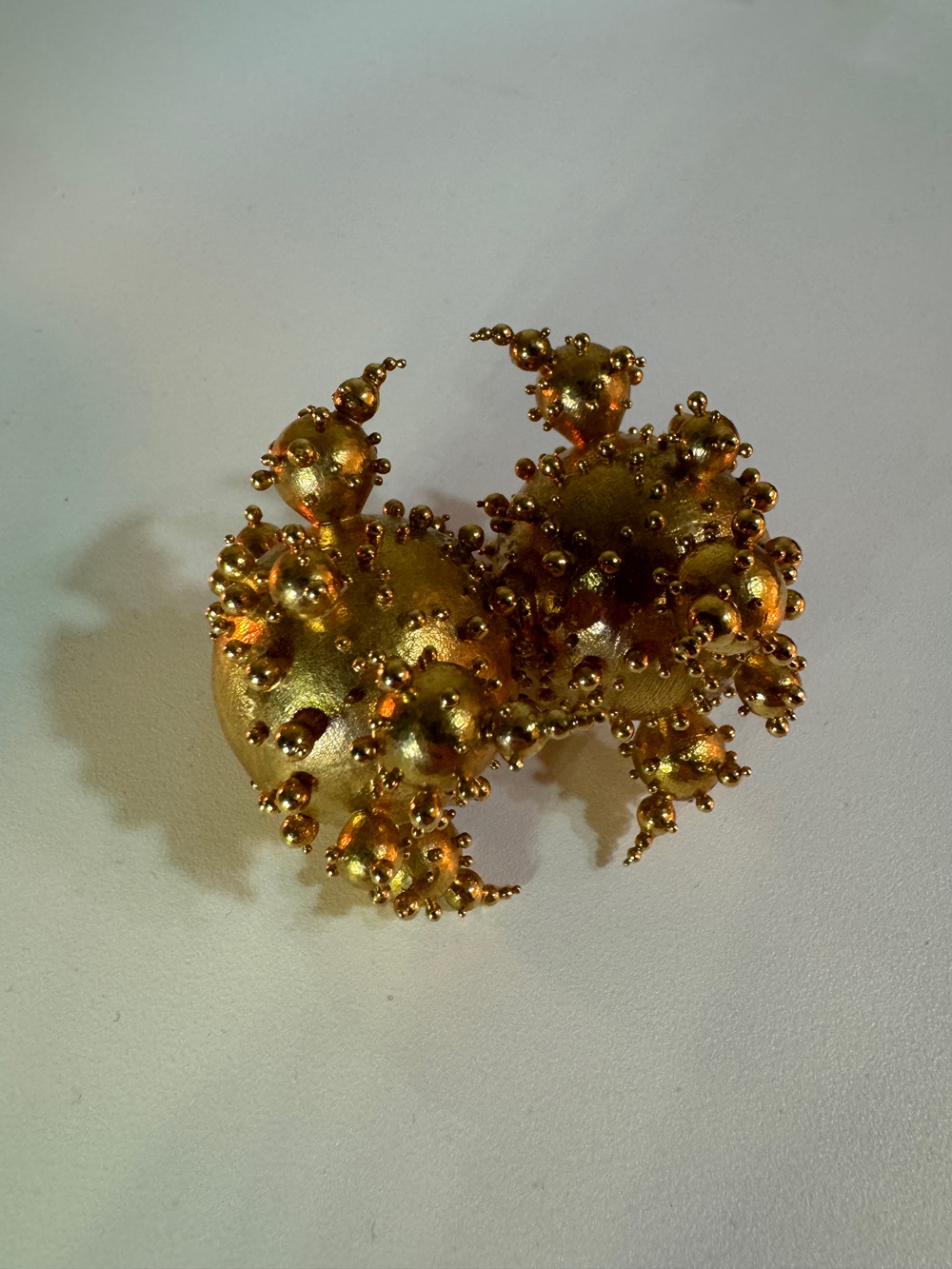
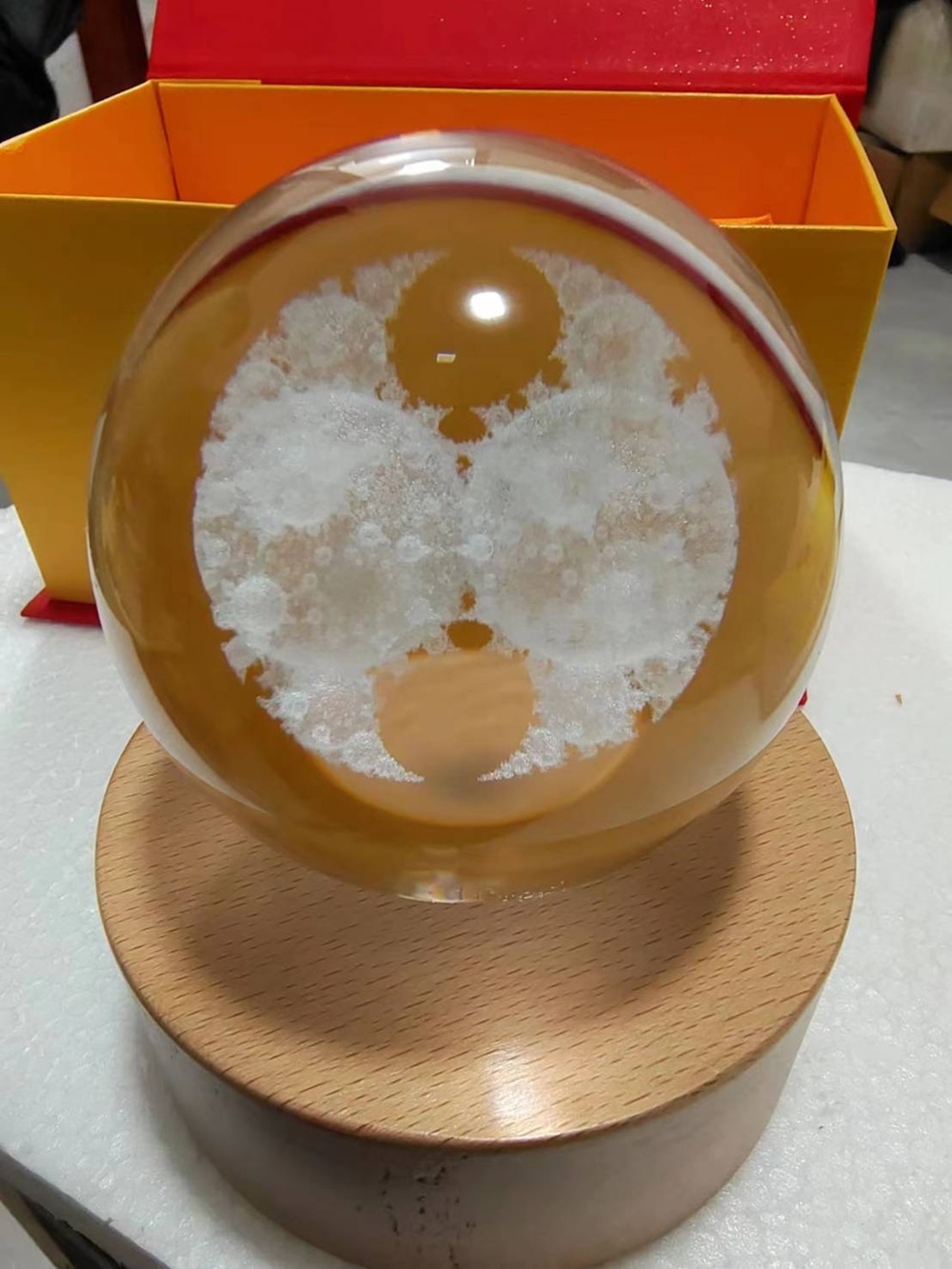
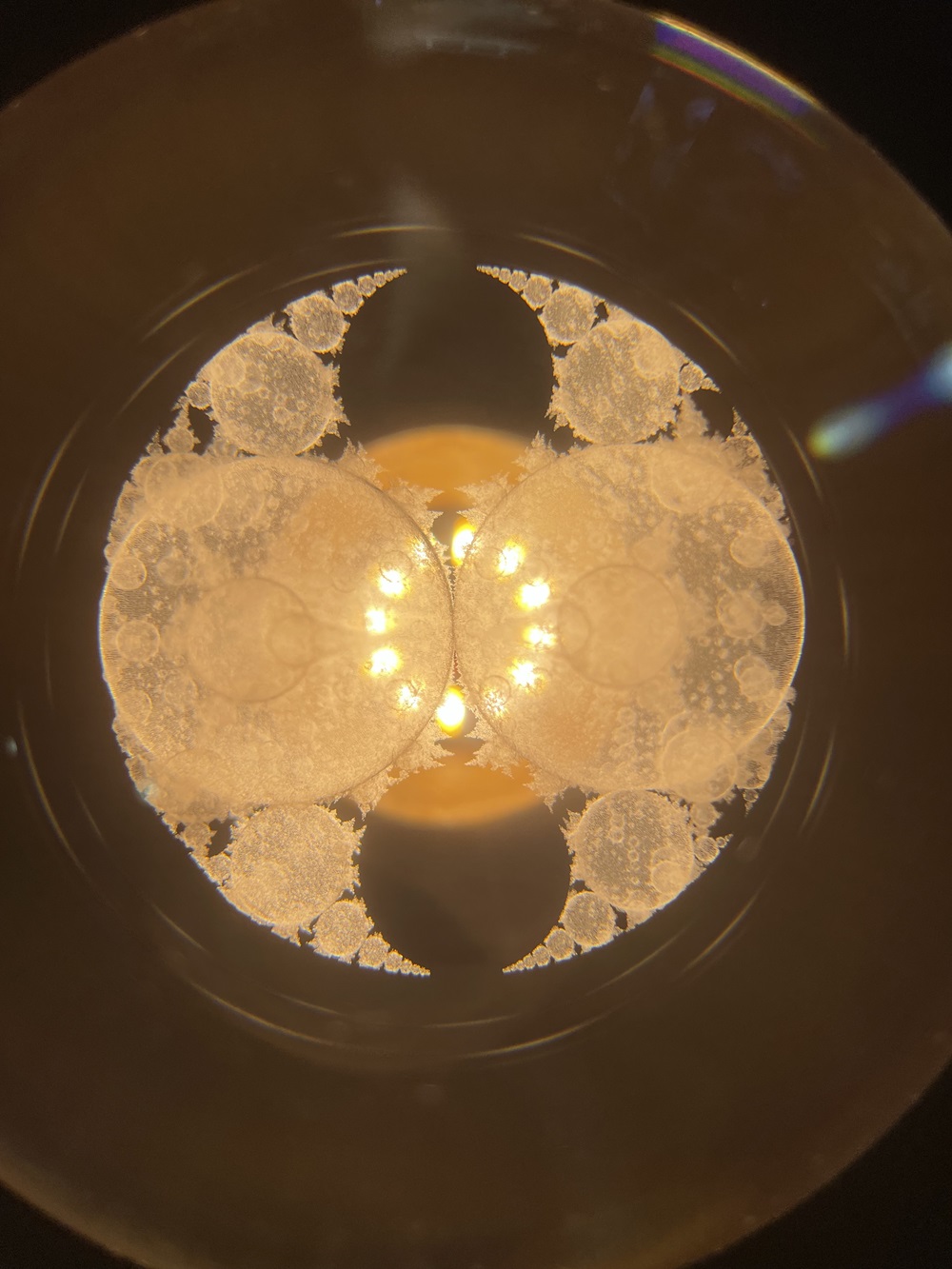
I should mention that a 3D Apollonian gasket is a type of Kleinian limit set fractal made up entirely of
spheres
of different sizes, arranged such that any two spheres intersect at at most one point
(and any sphere intersects at least one other sphere, also at a one point).
In these early experiments I had generated 3D meshes of the gasket using a relatively inefficient algorithm that
requires one to maintain an explicit list of all the spheres making up the gasket, and
which has a runtime proportional to the number of spheres. In practice, I found that this greatly limited the
resolution of the gasket.
However, I'd just coded up a more efficient version of the algorithm that requires no
such list and has a run time proportional to the logarithm of the number of spheres.
The result was a much higher resolution version of the gasket, and I decided that I would try it out as my first
hologram.
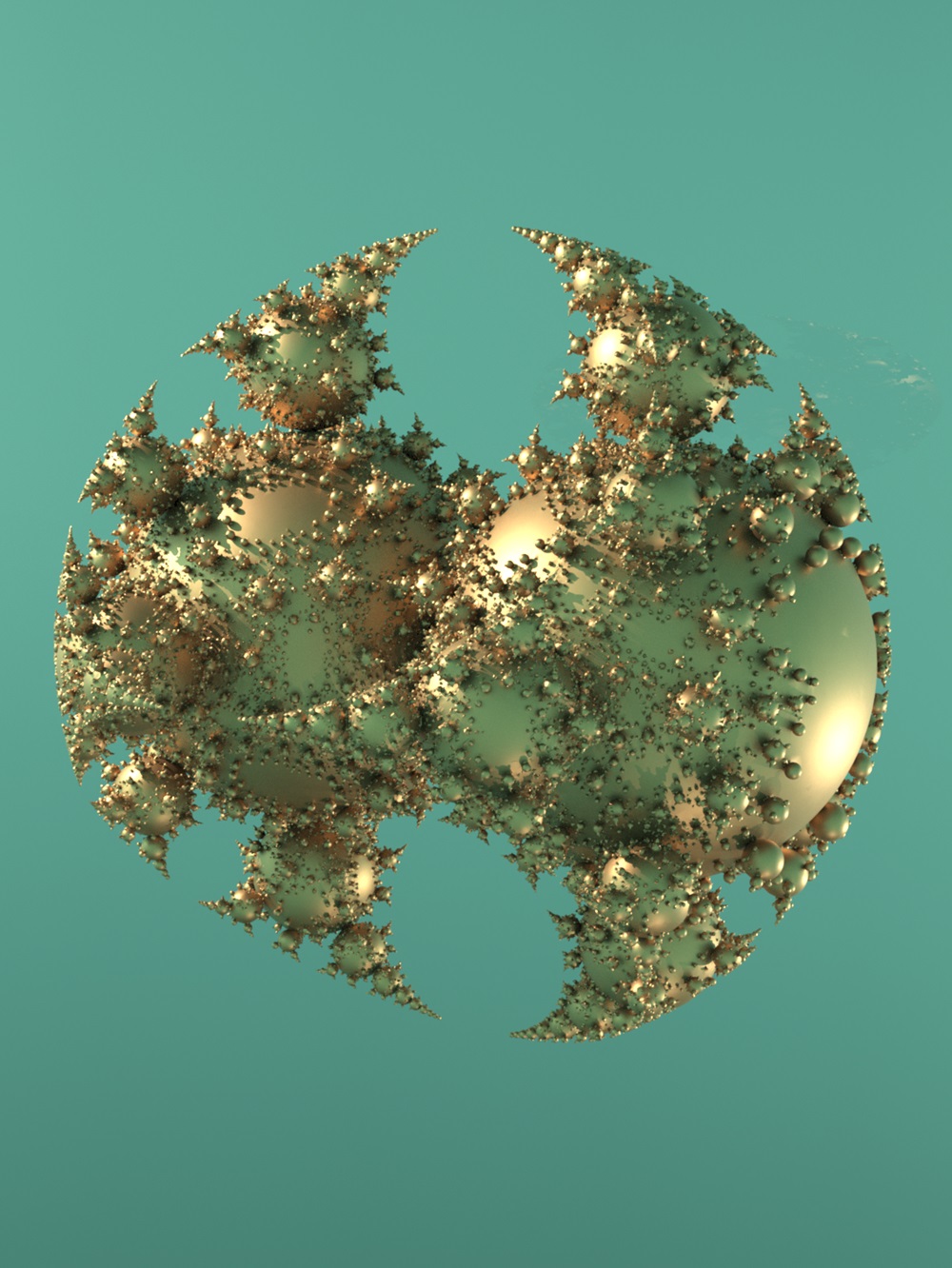
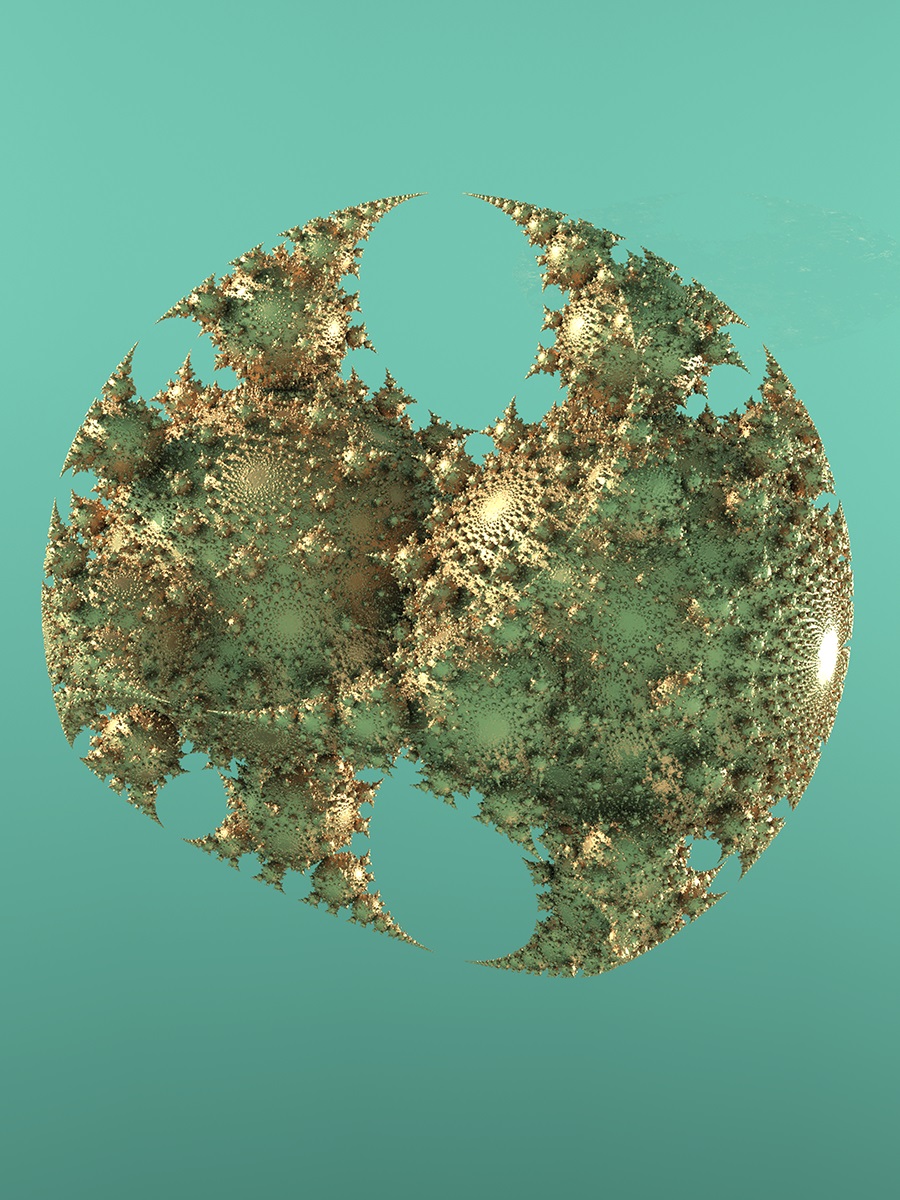
It's worth mentioning at this point that there are two main types of digital hologram - half-parallax and full-parallax. The difference in a nutshell is that half-parallax digital holograms only respond to horizontal motion of your head, ignoring any vertical motion, while full-parallax digital holograms respond to both types of motion. Half-parallax holograms have the advantage that they require only a single horizontal slice of renderings, which can be done on a fast PC in about eight hours to a day, depending on the complexity of the scene. Full-parallax digital holograms, while arguably more realistic, require a whole extra dimension of information. Instead of a single horizontal slice of images, you need 90 to 180 vertically translated horizontal slices, at least within the Chimera pipeline. In my experience, rendering a full-parallax hologram takes about a month, even when the job is split across several computers.
My goal in this project was simply to succeed in making a digital hologram, not necessarily to make a
spectacular one; it was a kind of holographic "hello world". As such, I wanted minimize the number of things
that could go wrong.
I therefore did everything within 3D Studio Max, so that the images of the gasket could be generated for me
automatically using the 3D Studio Max script available for download on the Chimera
Holography website. I would also be going for half-parallax
rather than full-parallax so that if I made a mistake in my renderings, I would only need a day rather than a
month to rerun them. My first test used a glossy grey moonlike texture, as illustrated in this video:
I sent the video to Michael Page to see what he thought:
"You've got a pretty interesting shape there, but frankly if you turn that into a hologram, you're just going to waste all lot of money producing a dark blob. Go for something shiny and metallic."
I followed Michael's advice and modified the texture to the shiny gold one in the images above, and then ran the Chimera script on it. The script was simple enough to use and I didn't really need to understand it to do so. Nevertheless, there were a couple of "gotchas":
1. Yves trims a 10% buffer around the border of each image (5% on the left and the right, 5% on the top and the bottom), which I was initially unaware of. After I ran the script overnight the first time and sent the images to Yves, he pointed this out. I zoomed the camera out to account for the buffer and started over.
2. I had rendered my gasket with a texture so shiny that parts of it came out pure white. This is a no-no in digital holography, as it can lead to a phenomema called "burn in", where the laser making the hologram is set to such a high power that it literally burns a hole in holographic emulsion; bright points close to or on the holographic plane are particularly problematic. I hadn't yet taken a course in digital holography, and so I didn't know this. After second round of rendering, I sent the newly zoomed out images to Yves; he told me to dial down the lighting in order to avoid burn in and re-render.
3. If the script was interrupted by, for example, Windows installing updates and then making a unilateral decision to reboot my computer, the script would by default start over from the beginning, potentially undoing days of work. So I had to understand the script enough to modify it to pick up from where it had left off (obviously this more relevant for full-parallax than it is for half-parallax).
Aside from the above things went smoothly, and I managed to produce a half-parallax version of the hologram within a few weeks. In particular, I had it ready in time for the submission deadline of the Bridges 2024 Mathematical Art Exhibition.
After succeeding in my initial half-parallax version of the hologram, I went on to produce a full-parallax version. The full-parallax version used ninety vertically stacked horizontal slices, and took both of my computers working round the clock for a month to compute. You can see a side by side comparison of the two in the following video:
Later, one of my friends who has been attending Bridges for over a decade told me she had never once seen a hologram presented there. This surprised me a little, as digital holography seems like such an ideal medium for mathematical visualization. However, I was also not surprised because I was aware of how little known the technology is. She suggested I make a film about the 3D Apollonian gasket hologram that is half how it came to be and half tutorial, and to submit it to the Bridges 2024 short film festival. The idea was to expose other mathematical artists to the possibilities of digital holography while at the same time giving them a brief overview of how to get started. I agreed with her that mathematical artists would surely be all over this technology if only they knew that it exists. The result was this video:
While the film did generate some interest, it remains to be seen whether or not holograms will become a common sight at future Bridges conferences.
References
- Gentet, Yves; Gentet, Philippe (2019-12-01). "CHIMERA, a new 3D holographic printer combining low-power continuous lasers and fast printing". Applied Optics. 58 (34): G226–G230.